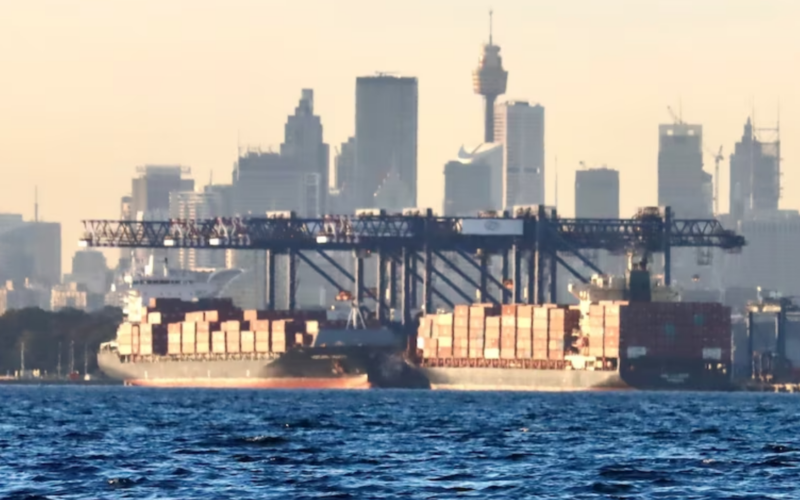The ongoing crisis in the Red Sea is causing a spike in shipping costs, disrupting global trade and raising concerns about potential repercussions on inflation. The diversion of container ships from the Suez Canal due to attacks is having a widespread impact on freight rates, particularly affecting trade between Asia and Europe.
Shipping costs have surged globally, driven by the diversion of container ships around the Cape of Good Hope in South Africa as an alternative to the disrupted Suez Canal route. According to S&P Global Commodity Insights, the rate for a 40-foot container from North Asia to Europe has skyrocketed over 600% to $6,000 since the outbreak of the Israel-Hamas war in October. Similar spikes are observed in shipping rates from North Asia to the U.S. East and West Coasts, with increases of 137% and 131%, respectively, since early October.
JPMorgan warns that the rising shipping costs could pose a threat to the fight against inflation. The investment bank suggests that if these increases in shipping costs translate into higher final goods prices, it may contribute to consumer price inflation in the coming months. The potential consequences could stall progress on reducing global core Consumer Price Index (CPI) inflation, challenging expectations for interest rate adjustments.
U.S. National Security Council spokesperson John Kirby emphasized the economic impact of Red Sea disruptions, highlighting the dependence of the global economy on this key international waterway. The Biden administration is closely monitoring the situation, expressing concern and leading a multinational maritime force to protect vessels navigating the region.
While the immediate impact on consumer prices is expected to be gradual, JPMorgan suggests that a prolonged disruption in shipping could have a domino effect on the supply chain. The first quarter of the year, being a less intensive import period for retailers, may mitigate immediate disruptions. However, a protracted blockage could keep freight rates elevated, affecting global supply chains beyond the first half of the year.
The attacks in the Red Sea are compelling shippers to reroute trade, with potential congestion problems at ports. Rerouting via the Cape of Good Hope and transpacific routes to the U.S. West Coast both present challenges. The risk of significant container and ship pile-ups, as witnessed in previous years, could occur, impacting the efficiency of ports like LA Long Beach.
Large retailers, locking in rates through contracts rather than relying on the spot market, are less exposed to current shipping volatility. However, surcharges imposed by shipping companies, such as Hapag-Lloyd and Maersk, highlight the challenges faced by the industry. Retailers seek clarity about reroutings and delays for contingency planning, emphasizing the adverse effects of uncertainty on supply chains.
The Red Sea crisis’s impact on shipping costs is reverberating globally, posing challenges to the fight against inflation and disrupting supply chains. While immediate consequences may be limited, a prolonged disruption could have cascading effects, affecting global trade dynamics. The situation underscores the vulnerability of interconnected economies and the need for coordinated efforts to address disruptions in key international trade routes.








